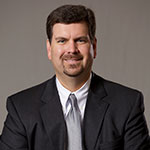
Typical project managers are concerned with three things: cost, schedule, and scope. Faced with massive construction projects, it’s their job to make sure each is completed on time, on budget, and within the stated specifications. Everything else is secondary. Saeid Garebaglow isn’t a typical project manager, though. Because he’s a licensed architect, he sees more than just costs when he looks at commercial real estate; he sees opportunities. To seize them, he must protect the bottom line but also look beyond it.
The result is buildings that are not only completed quickly and affordably but that also meet the needs of their users, Garebaglow says. As the head of institutional project management at New York-based Morgan Stanley, he’s in charge of the bank’s commercial real estate projects throughout North and Latin America, and he recently sat down with American Builders Quarterly to explain how his unique background results in offices that work for people.
Saeid Garebaglow’s Career Milestones
1979: Moves to New York from Iran at age 17; plans to return to Iran after school but can’t because of the Iranian revolution
1981-1986: Graduates high school and takes several years off to work and travel
1986: Enrolls in college to study architecture
1990-1991: Spends his last two years in school studying architecture abroad in France, which shapes his belief that architecture should be more about users than buildings
1991-1994: Works for a number of architectural firms, first as a designer and then as a project architect, all the while craving a more senior role
1994: Joins Citibank as a strategic planner and builds a digital library to cull data from Citibank’s New York real estate portfolio
1995: Receives his architectural registration, becoming a registered architect in New York State
1998: Citibank becomes Citigroup, at which point Garebaglow is promoted to VP of the company’s workplace strategies and solutions group; there, he oversees workplace design across the company’s real estate portfolio, including a global expansion of his New York project, encompassing 54 million square feet of commercial real estate across 22 countries
2001: Starts his own real estate consultancy, REplan LLC
2004: Joins Morgan Stanley in his current role as VP, overseeing project management within the company’s North American commercial real estate portfolio; within six months, he’s assigned his first major project: designing Morgan Stanley’s new office in downtown Manhattan
2011-2014: Executes his most significant project to date: a consolidation and enhancement of Morgan Stanley’s New York metro-area real estate holdings, known as the Midtown and Downtown Initiative
2014: Morgan Stanley promotes Garebaglow to head of institutional project management in its Americas region
You began your career as an architect. How did you get interested in architecture?
I grew up in Iran until I was 17. Then I came to the United States to finish high school and go to college. At this same time, a revolution was happening in Iran. Iran has a very rich history around architecture and design, but with the revolution, things shifted from color to black. That’s when I realized what a rich culture I’d left behind. With that, more and more, I was drawn to the visual cues around myself, and I started noticing architecture and the built environment.
What did you notice exactly?
To me, architecture is not about buildings; it’s about the people who use them or live in them. As an architect, you have to be very aware of what is really, truly the reason for architecture, be it colors, fabrics, finishes, or the design of the building itself. Too often, I think, architects lose sight of that. Architecture for them becomes about the building on its own, but for me it’s about its intended use or users. It can look fantastic, it can look colorful, it can look tall, it can look short—but it still has to work for the people who are using it.
You’re obviously passionate about architecture, so how did you end up in project management?
After school, I worked for several architectural firms in New York. Then I had an opportunity to work for Citibank doing strategic planning. At that time, Citibank was ramping up its corporate real estate organization, and they wanted subject-matter experts who had enough architectural expertise to understand issues and provide solutions. When you start out as an architect, you’re assigned to a project but you’re working on a very small-scale part of that project. You’re working with the architect in charge, but you’re always focused on only a small part of the bigger picture. At Citibank, I could be part of that bigger picture. In this case, the bigger picture happened to be around “workplace.” It was my job to ask, “What do people look for in a workplace?” Again, it goes back to the idea of making an impact on a building’s user.
How did you end up at Morgan Stanley?
For a long time I wanted to own my own business, so in 2001 I decided to open up a company called REplan, which was a small boutique real estate firm offering consulting services to Fortune 500 companies. The biggest challenge we faced was being a young company. Because we were small, it was hard to win large projects.
At some point it became clear we weren’t going to win the big projects I wanted to do, so in 2004 I decided to join Morgan Stanley’s corporate-services group. Citibank’s real estate group was a very large organization with lots of layers of management. Morgan Stanley’s, on the other hand, was a very lean organization where you could make decisions and move to execution very fast. That was welcome news to me.
I came in originally to look at processes and best practices within the organization, but six months in, a major initiative came up: Morgan Stanley was opening an office downtown at 1 New York Plaza. I was asked to lead the project, which was several office floors and some infrastructure spaces as well as conferencing and multimedia rooms. The project took 12–14 months.
That was your first commercial real estate project for Morgan Stanley. No doubt, you’ve managed several others since. What’s one that stands out?
In 2011, we started an initiative in New York that we called our Midtown and Downtown Initiative. There were lots of leases due, and also we had a major tenant in our headquarters building that was leaving. So, there was an opportunity to create a master plan that involved consolidating and enhancing our space throughout the whole New York metro area.
I was one of three executives who managed the Midtown and Downtown Initiative. At our headquarters in Midtown, we had the opportunity to build 12–15 floors of office space, a conference center, training space, a cafeteria, and a fitness and health center. Downtown, we added new floors and moved away from cubicles and offices to an open floor plan that incorporated as much daylight as possible and more collaborative spaces. It took away the walls between cubicles so [that] people could collaborate with each other. Part of the new design also was bringing watercooler discussions out into the open, so we made a sort of town square where people could gather to have lunch or coffee but also meet spontaneously about a project or client without having to be stuck in some backroom someplace. It was a big change in terms of design, but it was very successful. We’ve gotten lots of good feedback. People love the spaces.

Clearly, your architectural philosophy—designing for users—is very much alive and well. Now that your job is project management, do you miss design?
What I do is actually very closely aligned with what I want to do. There are days that I have to think more strategically about the big picture, but I’m also someone who likes to roll up his sleeves and be part of the design process to really understand what employees’ issues are and what design elements we have to incorporate to meet their needs—whether it’s office space, infrastructure, or amenities like a cafeteria. With that, I do use my architectural and design skills to collaborate with our architects and planners and come up with designs that make sense—or even designs that can change the way we work.
Have your projects at Morgan Stanley also changed the way that you work personally?
It’s interesting. My last few years in the project-management world have been like listening to a symphony. Lots of people contribute to every song. That, to me, has been the big takeaway from my work. In architecture, you’re taught that the architect is a single person who builds a skyscraper. What I’ve realized, however, is that it’s not about one person; it’s about collaboration and coming together as a team to get things done.



